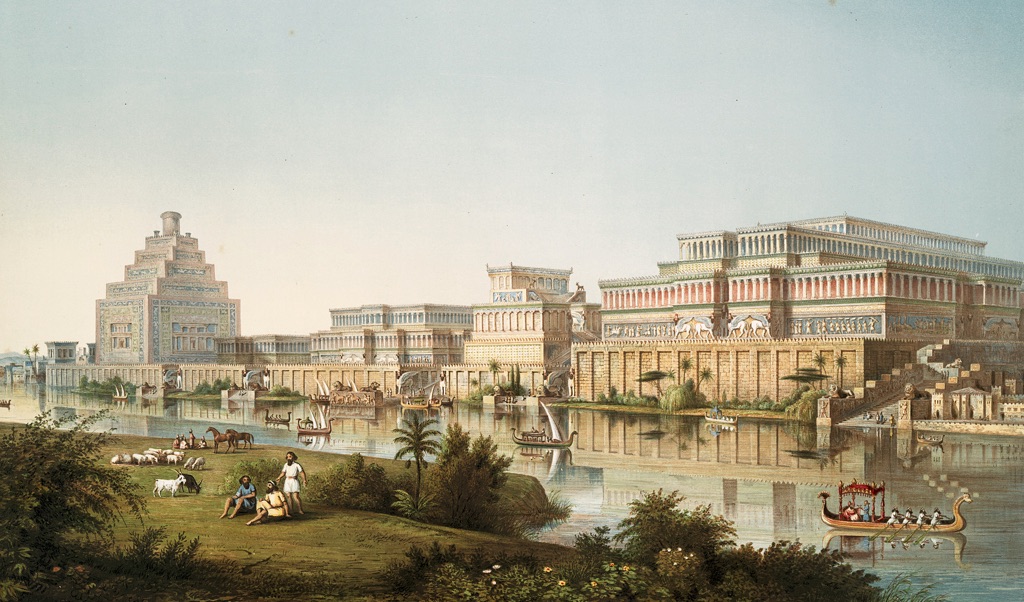Nineveh, once the flourishing capital of the Assyrian Empire, stands as a testament to ancient Mesopotamian civilization. Located on the eastern bank of the Tigris River, it was one of the oldest and greatest cities in antiquity, renowned for its magnificent gardens, temples, and impressive defensive walls. Its strategic position near present-day Mosul in Iraq made it a hub of trade, culture, and political power. The city’s history is deeply intertwined with biblical narratives and classical accounts, which have captivated scholars and the public alike. Despite its eventual fall in 612 BC, Nineveh’s legacy endures through its archaeological remains, providing invaluable insights into the Assyrian Empire and the broader ancient Near Eastern world.
Get your dose of History via Email
Historical Background of Nineveh
Archaeologists unearthed Nineveh in the 19th century, revealing its long-lost splendor. Austen Henry Layard, an English archaeologist, led these excavations in the 1840s. The city’s origins trace back to the early days of civilization, with its founding attributed to the Assyrians. Over time, it grew into a metropolis under the rule of King Sennacherib in the 7th century BC. Nineveh became the empire’s heart, reflecting Assyrian might and culture.
After Sennacherib’s reign, Nineveh continued to thrive. It was home to the famous Library of Ashurbanipal, which housed a vast collection of cuneiform texts. These texts are crucial for understanding ancient Mesopotamian literature, science, and history. The city’s significance extended beyond its cultural achievements. It was also a stage for historical events, including the brutal siege and eventual sacking by a coalition of Babylonians, Medes, and Scythians in 612 BC, leading to the empire’s downfall.
Following its destruction, Nineveh’s ruins lay buried for centuries. The city’s location was eventually forgotten, becoming the stuff of legend. It wasn’t until the 19th-century archaeological discoveries that Nineveh re-emerged from the sands of time. These excavations brought to light the city’s grandeur and its pivotal role in ancient history.
Despite its rediscovery, Nineveh’s past is not without gaps. Various empires, including the Persians, Greeks, and Romans, influenced the site after the fall of the Assyrian Empire. However, the extent of their impact on Nineveh remains a subject of ongoing research. The city’s layered history reflects the ebb and flow of civilizations that have risen and fallen in the Mesopotamian region.
Today, Nineveh’s historical importance is recognized worldwide. It has become a symbol of the Assyrian Empire’s legacy and a key subject of study for historians and archaeologists. The site continues to reveal new findings, shedding light on the complexities of ancient Near Eastern societies.
About Nineveh
Nineveh’s grandeur was a reflection of its architectural prowess. The city was famed for its massive walls and fifteen gates, which served as both fortifications and ceremonial passageways. These walls, some of which still stand today, were a testament to Assyrian engineering skills. They were constructed using mud bricks and stone, materials readily available in the region.
At the heart of Nineveh lay the royal palace, an architectural marvel of its time. The palace was adorned with intricate bas-reliefs and colossal statues of winged bulls known as lamassu. These served not only as decorations but also as symbols of royal power and divine protection. The palace’s layout was complex, with a series of courtyards, chambers, and halls designed to awe visitors and reflect the king’s authority.
The city was also renowned for its botanical gardens, which some scholars believe to be the legendary Hanging Gardens, one of the Seven Wonders of the Ancient World. These gardens showcased the Assyrians’ advanced knowledge of horticulture and irrigation. They brought together exotic plants and trees from across the empire, creating a lush oasis in the heart of the city.
Nineveh’s infrastructure extended beyond its palaces and gardens. The city had an elaborate water supply system, with aqueducts and canals ensuring a steady flow of water from the surrounding hills. This system was crucial for sustaining the city’s population and maintaining its gardens and agricultural lands.
The city’s ruins also reveal a complex urban layout. Residential areas, workshops, and markets were all part of Nineveh’s urban fabric. The city’s design reflected a sophisticated understanding of urban planning, with public and private spaces carefully arranged to meet the needs of its inhabitants.
Theories and Interpretations
Over the years, Nineveh has been the subject of various theories and interpretations. Its association with the Hanging Gardens, traditionally attributed to Babylon, is one such theory. Some historians argue that the gardens were actually located in Nineveh, citing the city’s advanced irrigation systems as evidence.
The purpose of certain structures within Nineveh has also sparked debate. For instance, the function of some temples and buildings remains unclear. Archaeologists must often rely on comparisons with other Mesopotamian sites to hypothesize their uses. This process involves matching archaeological findings with historical records, a task that is both challenging and intriguing.
Dating the layers of Nineveh’s ruins has been another area of focus. Radiocarbon dating and other scientific methods have been employed to establish timelines. These techniques help to piece together the city’s history and the broader chronology of the Assyrian Empire.
Mysteries still shroud Nineveh. The full extent of its influence and the daily lives of its inhabitants are not fully understood. Researchers continue to interpret the city’s art, architecture, and artifacts to gain a better understanding of Assyrian society.
Finally, the interpretation of Nineveh’s fall and the events leading up to it has been a topic of interest. The historical record, including accounts from neighboring civilizations, provides a narrative of a city under siege. However, the exact circumstances and internal factors contributing to its downfall are still being explored by historians.
At a glance
Country: Iraq
Civilization: Assyrian Empire
Age: Founded approximately in the 7th century BC
Conclusion and Sources
Reputable sources used in the creation of this article include:
- Wikipedia: https://en.wikipedia.org/wiki/Nineveh
- Britannica: https://www.britannica.com/place/Nineveh-ancient-city-Iraq
- World History Encyclopedia: https://www.worldhistory.org/nineveh/

